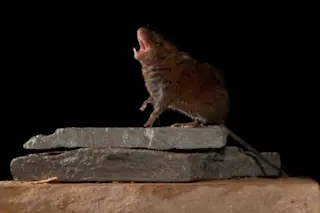High in the cloud forests of Costa Rica, a distinct chirping sound ripples across the landscape. This high-pitched staccato refrain trills not from birds, but mice. Now researchers have found that the tiny rodents making these sounds, known as Alston’s singing mice, take turns belting out their tunes much in the same way people take turns when they talk to each other. The discovery could shed light on communication problems in human speech.
Some 10 percent of the Americans suffer from a communication disorder. Those can stem from developmental disorders like autism, or stroke-related language deficits, for example.“Disorders related to this [turn taking] process can be really devastating,” said Michael Long, a neuroscientist at the NYU School of Medicine, who led the new research. “Everything from developmental disorders like autism to stroke-related language deficits can affect this process.”
To get to the root of communication disorders in the brain, the ...














